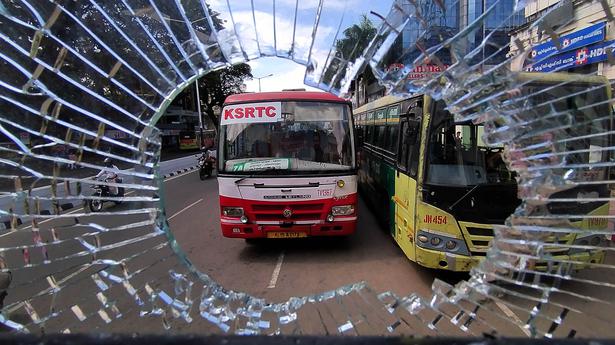
Explained | Will the new 12-hour single-duty system save Kerala State RTC?
The Hindu
The new system, as per the Motor Transport Workers Act 1961, envisages utilizing the optimum efficiency of employees
The story so far: The public transportation system in the country has long been beset with issues, although the situation varies from one state to another. In the case of Kerala, the state public transport corporation- Kerala State Road Transport Corporation (KSRTC) – has always been in the limelight for all wrong reasons, plagued as it is by chronic issues ranging from militant trade unionism to mounting debts which often prevent requisite investments in maintaining and upgrading the fleet on time.
The Corporation’s latest decision to implement a 12-hour single-duty system for employees has triggered another round of protests with unions putting up stiff resistance to the move. The management however has implemented the new system on an experimental basis at Parasala depot in Thiruvananthapuram from October 1.
Also read: 12-hour duty: KSRTC management, unions stick to their guns
The new system, as per the Motor Transport Workers Act 1961, envisages utilizing the optimum efficiency of employees. As per the existing system, the employees will have to work only eight hours and they can opt for double-duty after the first eight hours. Making use of this system, the majority of the employees – conductors and drivers – used to take double-duty and at times three duties at one go. In short, an employee will have to report for duty for only three days if he/she chooses double duty in three days.
In the 12-hour single-duty system, employees will have to spend around 12 hours in the office, although they would only be on duty for eight hours. The peak hours of the transport Corporation a day are between 7 a.m. to 11. a.m. and 3 a.m. to 8 p.m. As per the old system, an employee will have to take double duty to operate the service of a bus for a whole day. However, by shifting to the new system, the management can judiciously make use of the working hours of employees during peak hours without going for double duty. Therefore, the original working hours of employees would be the same, but the corporation can save a considerable amount of money.
While the old system requires an employee to work only three days if one chooses double-duty (16 hours a day), the present system demands their attendance six days a week by limiting the working hours to eight hours per day.
The Corporation maintains that the single duty system would increase the productivity of employees and reduce the risk of accidents caused by work-related stress. Further, employees working beyond the allotted eight hours would be eligible for overtime allowance, making it a win-win situation for the Corporation as well as the workforce.













